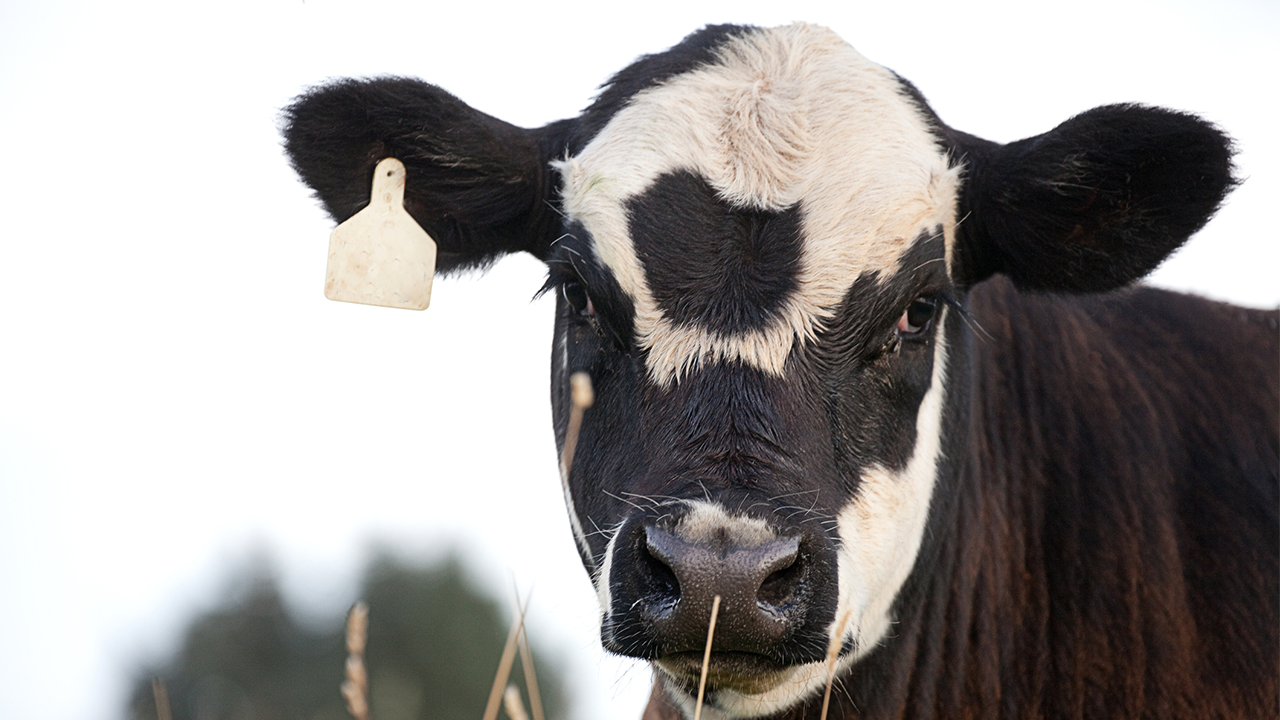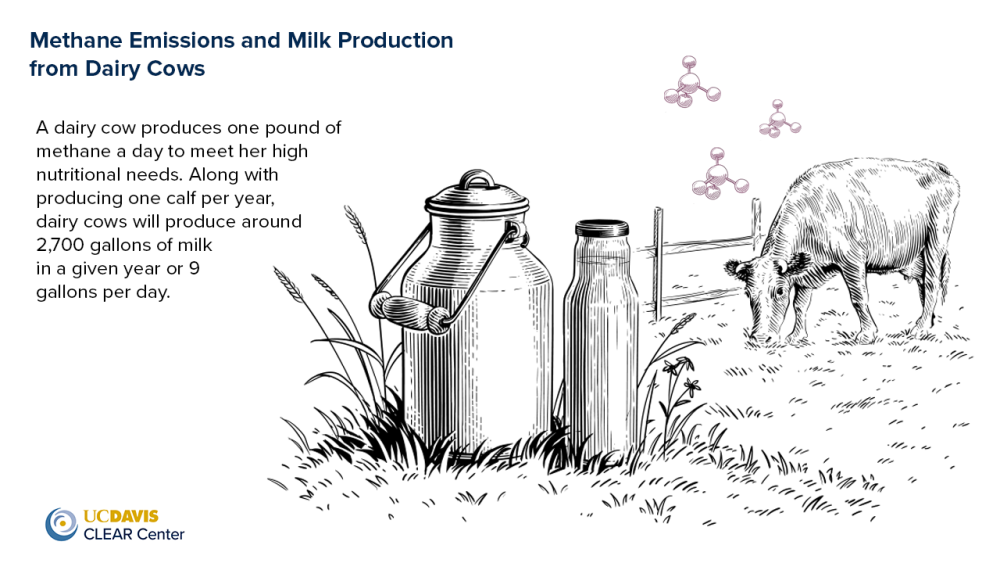
How cross-breeding beef and dairy cows can improve sustainability on farm
By Conor McCabe
A cheeseburger is a quintessential staple on millions of grills and dinner plates, that has typically been a great symbol of cross-sector collaborations, with the cheese coming from the dairy industry and the patty contributed by the beef industry. Americans love them so much that in 2020, it was estimated that the U.S. consumed 50 billion of these sandwiches a year. But in recent years, new management strategies on dairy farms have cooked up solutions that allow us to make a cheeseburger relying on the dairy industry alone, which carries benefits for people, producers, and the planet.
Dairy cows and beef cattle are different animals, so to speak. They have different hair colors, are raised differently and ultimately, used differently to produce food for consumers. But that doesn’t mean the sectors can’t work together in a new way.
Like all mammals, for a dairy cow to produce milk, it must first give birth to a calf. If the calf is a female, the newborn will be kept on the farm, becoming a member of the herd when it develops and gives birth to its first calf, roughly two years later. If the newborn calf is a male, which can’t produce milk, it will likely be sold into the beef supply chain.
Breeds utilized for milk production include Holstein and Jersey cattle, which have been selected to produce high-quality milk but not meat. Cattle breeds that are ideal for producing quality beef include Angus and Simmental, but they’re not great at producing milk. To get the best of both worlds, dairy farmers are breeding their dairy cows with beef bulls, producing calves that develop and give birth to higher-quality offspring, which brings more profitability for the producer, and improved sustainability for the dairy and beef industry.
It's not a new thing to co-mingle beef and dairy cows. In fact, dairy producers have been part of the beef supply chain for as long as anyone can remember. When dairy cows complete their life as milk-producing animals, they’re sold as beef animals; approximately 3 million of them are sold every year for this purpose. This typically happens when a dairy cow is 4 to 5 years of age, resulting in meat that’s tougher than that of most beef breeds harvested around 18 months. As a result, beef from dairy cows is utilized for lower-quality steaks and ground beef.
Another source of beef comes from male dairy calves, which bring little benefit to a dairy farm, since only females can produce milk. These dairy-turned-beef calves can go one of two routes: They can be raised for veal and harvested at around 6 to 7 months of age, or they can be raised to the size of a 1,400-pound feedlot beef animal and harvested at approximately 2 years of age.
All in all, dairy-breed genetics make up approximately 20% of the annual U.S. beef supply, a nonzero and significant impact for the beef industry that has economic implications as well.
For instance, current milk markets are such that farmers work with a slim profit margin, so they need to look for additional revenue streams and ways to reduce costs. Before a cow begins producing milk, a farmer must invest $1,700 to $2,000 in feed and management costs to grow that cow from the day it is born until it gives birth to its first calf around 2 years out. Limiting the farm’s inventory of heifers – female cattle that have not had a calf – is one way to reduce costs. On many farms, this means they will need about one-third of all the calves born in the year to go on to be successful members of the herd.
Without any reproductive interventions, roughly half of all calves born on a farm are male (bull) calves, and the other half are heifers (Figure 2). About two-thirds of these heifers eventually will become part of the farm’s milking herd, which leaves a large excess of calves that could be utilized for the beef supply under normal operations. A dairy’s male calves bring approximately $50 at market, so they’re not highly valuable as a source of revenue. However, when beef cattle are bred to dairy cows, the male offspring can be sold for $250 per calf, which accounts for a huge price differential that can be an important income stream for dairy producers. Thus, figuring out how to appropriately manage the two-thirds of the calves that will not serve as replacement milk cows has been an increasing area of interest for today’s dairy industry.

Penciling out the sustainability impacts
The U.S. beef industry relies on a herd of 30 million momma beef cows that graze the rangelands across the plains of Texas, Nebraska and California among others. The goal for each of these female cows is to produce one calf per year, and a portion of these calves will be kept to serve as future momma cows to maintain or grow the herd. The others will be fed out and used to produce beef when the animal reaches approximately 18 months of age when finished with grain.
Not only is there a financial cost to raising cattle, sustaining this sizable momma-cow beef herd has an environmental impact as well. Most methane emissions associated with the entire beef supply chain come from this herd of momma cows on pasture, which is serving an essential role by grazing rangeland grasses. But what if we could begin to displace some of these beef-breeding cows for dairy farmers to produce beef or beef x dairy cross calves to help fulfill the consumer demand for beef and dairy?

A momma beef cow produces one calf per year and a subsequent half-pound of methane a day (Figure 3a). That methane – a strong but short-lived greenhouse gas – then contributes to the warming of the planet. Contrast this with a dairy cow, which will produce methane no matter the genetic makeup of the offspring at an average of one pound per day, a greater amount than the beef cow. The dairy cow also produces a human-consumable protein in milk (Figure 3b). Therefore, the methane production for dairy cows is spread out across more units of human-edible protein. Despite the greater numerator of producing more annual methane, this also carries a larger denominator of pounds of protein, which adds up to a smaller total carbon footprint. Now, this is not to say that we should eliminate all beef animals and replace them with dairy cows. In fact, the market doesn’t exist to withstand that much milk production, not to mention that mother beef cows fill a specialized niche in the ecosystem by grazing rangelands where other crops cannot feasibly be grown, help suppress wildfire fuel and are a source of economic livelihoods for rural communities. Thus, determining the ideal number of beef and dairy cows needs to account for animal protein production, livelihoods and sustainability outcomes outside of carbon emissions alone.

Reproductive technologies to improve the sustainability of the industry
Beef x dairy calf crosses are certainly an advantage for beef quality compared to raising dairy animals for beef alone. Relatively new technologies have looked at having full beef calves birthed by dairy cows. How is that possible when the mom is a dairy animal?
Reproductive technology companies are working on retrieving unfertilized eggs from beef animals and mating them with sperm from beef cattle via in vitro fertilization. This fertilized egg is then transplanted into the dairy cow, which sustains a pregnancy as a surrogate with a fully developing beef calf. The resulting offspring will have none of the genetic material from its dairy-cow mother, but the mom will begin lactation just as if it gave birth to its biological calf. The baby will subsequently be of much higher value compared to both the dairy calf and the beef x dairy breed cross. While there are benefits for implementing these reproductive-management technologies, having access to veterinarians or trained technicians is part of the decision that needs to be made before a farm would fully adopt them.
Additionally, reproductive technologies such as sexed semen can help predetermine the sex of a beef calf. This technology has been used for a long time in the dairy industry to increase the odds for a heifer calf – and future lactating cow – to be born. However, the opposite is favored when producing beef calves. Therefore, genetic companies have attempted to produce beef x dairy crosses that are more likely to be male calves and increase the value of the offspring for the supply chain. New reproductive technologies are attempting to genetically edit bulls so they are more likely to produce male offspring based on their genetic code. By ensuring that the correct combination of calves destined for optimal value are produced for the beef and dairy supply chain, this can help further consumer preferences, producer profitability and food-system sustainability.
Reproductive management challenges yet to solve
Economics is a major consideration when a dairy farmer is deciding to retain a dairy cow for another lactation period or harvest it for beef. The farmer weighs the cost of feeding and housing the dairy cow with the dollars the animal is generating in milk production or in the value of the calf. When the costs outweigh the income, it’s practical to sell the animal. However, with these new beef x dairy breed crosses, that value of the calf drastically increases, and dairy farmers may choose to retain their dairy cows for an extra lactation. This space in farm decision-making has not yet been explored, with the subsequent impacts on all areas of sustainability needing to be evaluated.
The beef x dairy breed crosses are still a relatively new phenomenon in the dairy industry, but one that shows great promise. The best bulls in the beef industry have traits that lead to the high-quality meat. The report card that’s utilized to determine the best beef works very well when determining the best beef bulls to breed to beef cows. However, it’s too soon to tell if the same system works when beef bulls are bred to dairy cows. Ongoing research is helping to determine how well these systems translate to one another so that optimal breeding decisions can be made for calf performance and producer benefit.
Beef x dairy crosses have been one of the most rapidly adopted practices introduced to the dairy industry. With multifaceted benefits in sustainability, consumer product quality and profitability for dairy farmers, this intervention can be rapidly introduced across countries looking to meet their climate, producer, and consumer needs.
Granted, this is a relatively new practice in the United States; however, it’s bound to grow, based on what we are experiencing. Expect it to take off in other countries once the benefits become well known, including this one: By having the potential to reduce the total U.S. cow population and still maintain the country’s beef supply, the dairy industry will continue to produce more human consumable food with a smaller environmental impact.
